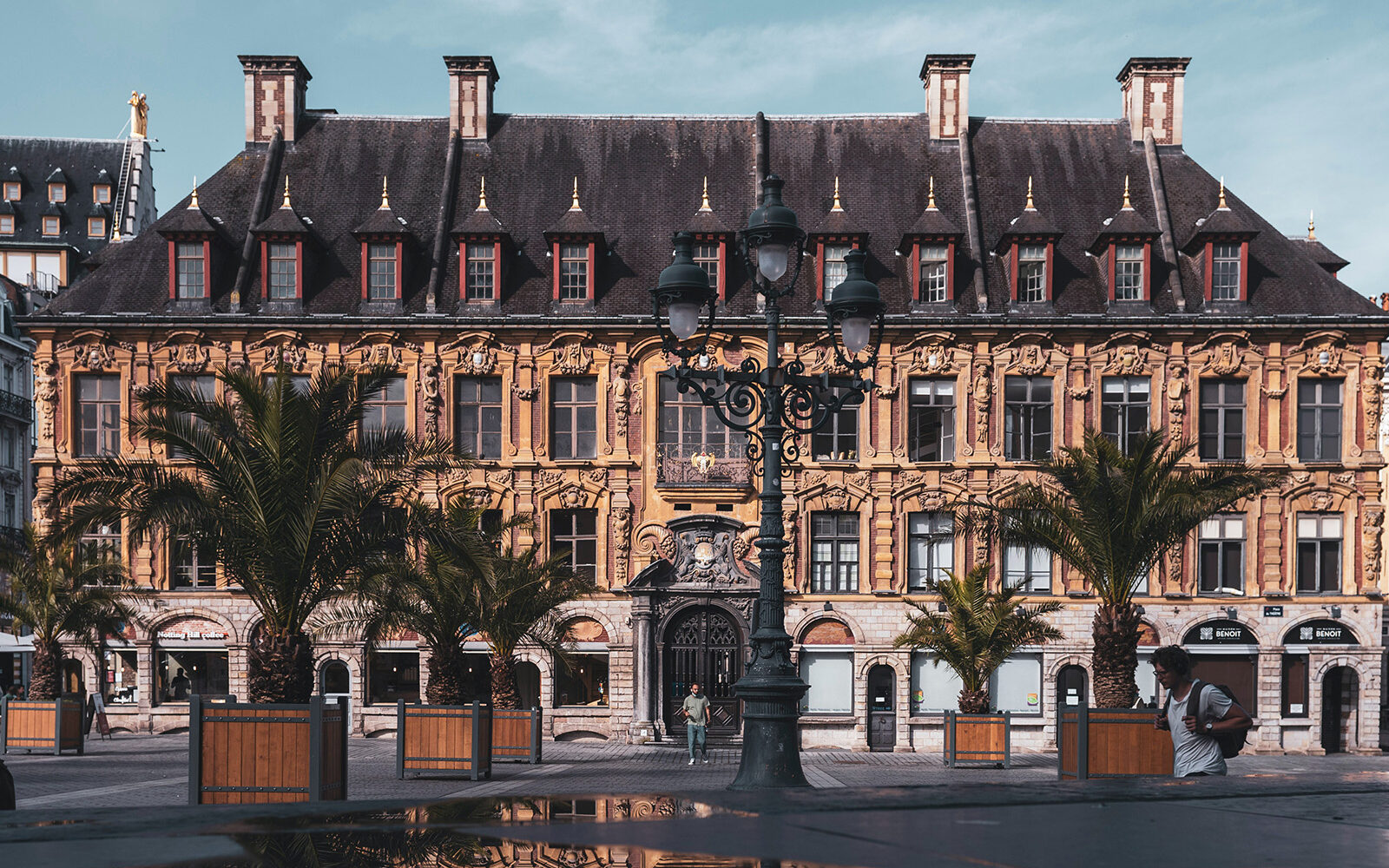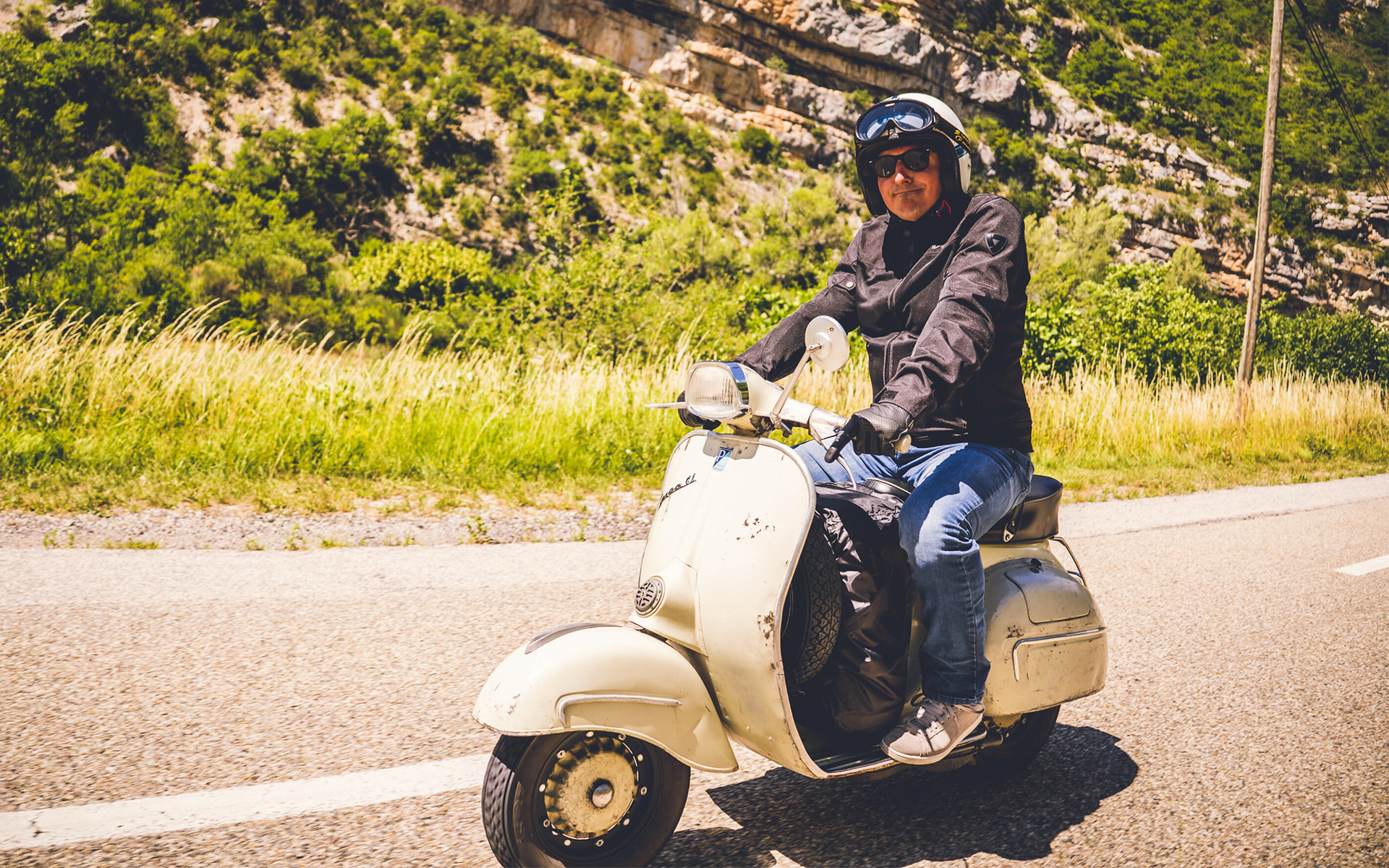Experience the diversity of northern France on a Vespa.
Marveling at rugged cliffs, listening to thundering waves, feeling the fresh wind on your skin and enjoying a glass of wine in the evening in a picturesque old harbor – this idea alone makes some hearts beat faster. But why rave for long when the destination is so close at hand?
A road trip with the Vespa through northern France is a unique experience for all senses and allows enthusiasts contrasting impressions. Especially along the northern Atlantic coast, numerous detours are worthwhile to take a closer look. Different coastal formations with unmistakable character show the multifaceted richness of natural beauty and elicit admiring glances from visitors. In order to pay attention to the many details and to experience the breathtaking features in their entirety, drivers should allow at least one week for the tour.
With a travel budget of about 1,000 euros, it is possible to spend the night in simple yet sophisticated accommodations and also enjoy one or two quality culinary specialties in restaurants typical of the region.
Before such a long trip, it does not hurt to check the Vespa with all the individual parts again, for add-on parts and accessories there is in the SIP Scootershop everything the Vespa needs. And for the ideal equipment for all weather conditions, there is also a wide selection.
From the big city feeling of Flanders to the multi-layered coastal landscape

Start: Lille
Destination: Le Touquet-Paris-Plage
Distance: 207 km
The starting point of the road trip is the city of Lille near the Belgian-French border. Due to its northeastern location within France and due to its historical development, the capital of the region “Hauts-de-France” impresses at first glance with its characteristic Flanders character.
On closer inspection, however, it becomes clear that many different architectural and urban-geographical influences have left their mark on Lille. Today, majestic monumental buildings, delicate facades and ornate decorative elements meet purist simplicity, free forms and modern materials.
This exciting composition of different urban structures from different periods of origin can best be discovered on a city tour by Vespa. In between, it is a good idea to recharge your batteries in one of the numerous cafés and observe the lively hustle and bustle in the city squares.
After an impressive stay in the narrow city space, the need for boundless freedom increases. The upcoming stage offers the best conditions for this. With a guaranteed view over the fields of northern France, riders now have the opportunity to test what their machine is capable of on the straight road conditions of the E42 – under the right wind conditions and with the Atlantic coast as their destination, a decidedly happy riding experience.
The port city of Dunkerque is the first destination on the coast and with its industrial charm is worth a short detour. As the route continues westward, however, drivers soon leave the smoky smokestacks behind and enter a completely contrasting environment: from now on, steep, light-gray chalk cliffs dominate the landscape, even appearing almost white depending on the incidence of light.
Along the D940 coastal route, drivers can expect an interplay of hilly dune landscapes, lush green pastures, sculptural rock formations, narrow bays and golden sandy beaches. At the “Plage de Ningles” south of the municipality of Boulogne-sur-Mer, this natural interplay can be experienced in a particularly impressive way.
Le Touquet-Paris-Plage offers numerous accommodations at fair prices. Typical for the resort is the spacious bathing beach with its offshore sandbanks, which are clearly visible depending on the tidal range. During an evening stroll along the wide beach, a view of the densely built-up silhouette directly behind the promenade provides a change of scenery.
Dramatic alabaster rocks in perfect light

Start: Le Touquet-Paris-Plage
Destination: Étretat
Distance: 190 km
As the coastal route continues to the southwest, riders keep discovering new exciting vistas along the remarkably high cliffs of the Alabaster Coast. Especially between Ault and Étretat, it is worth leaving the winding passage of the D940 more often and visiting the small villages perched above the cliff edge. Especially in the warm season, the late afternoon sun transforms the alabaster rocks into a true blaze of color. The coast then shines in warm beige and rust tones, so that in combination with the cold seeming deep blue sea shine, a fabulous and unique motif is created!
The filigree archipelago near Étretat also deserves special attention. The partly very pointed edges of the rocks in the sea are unique in the world. On the beach promenade of Étretat there are numerous restaurants with a view along the rocky bay.
Mondan bathing culture that cries out for visibility

Start: Étretat
Destination: Caen
Distance: 115 km
There is no way around Le Havre on the way to the Flower Coast. The modern port city offers plenty of space for expressionist open-space art. Its city center appears orderly, urban and purist.
Beyond the mouth of the Seine, a string of pearls of important seaside resorts stretches along the rest of the coast. In Honfleur, the tranquil harbor flair is best enjoyed from a cozy café terrace.
Deauville, Trouville and Cabourg provide a clear insight into the history of the baths. Stately villas on stately estates characterize the towns. Large hotel complexes and richly decorated prestige buildings mark the towns in a self-confident and expressive manner. Even today, the well-kept sandy beaches invite many visitors for a refreshing swim in the soothing surf.
In Caen, history buffs in particular get their money’s worth. The Norman city has a large number of sights from different eras.
Caen is a suitable destination to end a tour full of sensual and emotional impressions. On the one hand, there is now free space to process the many charms, while at the same time the anticipation rises to explore further highlights with the Vespa.



